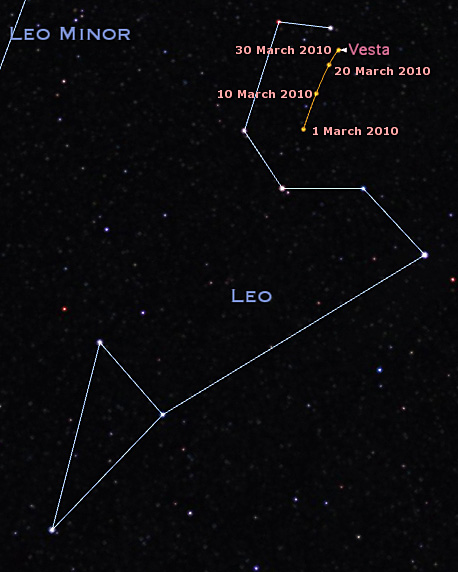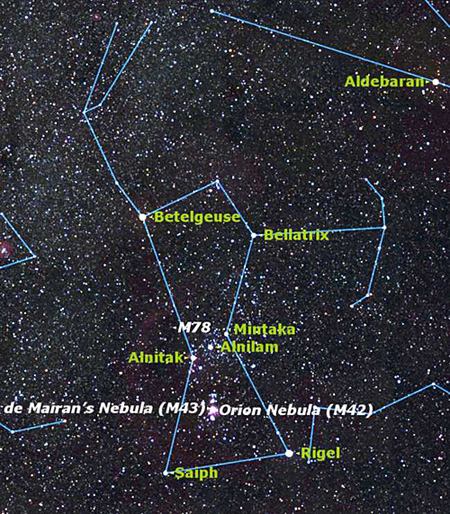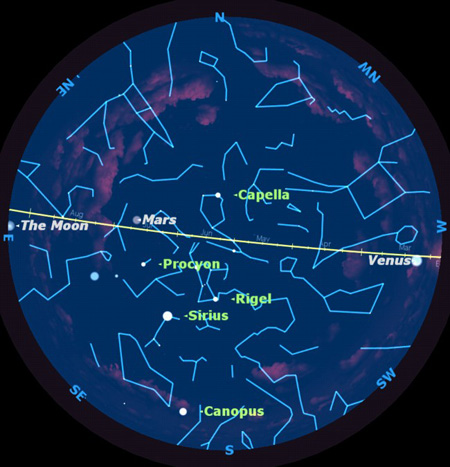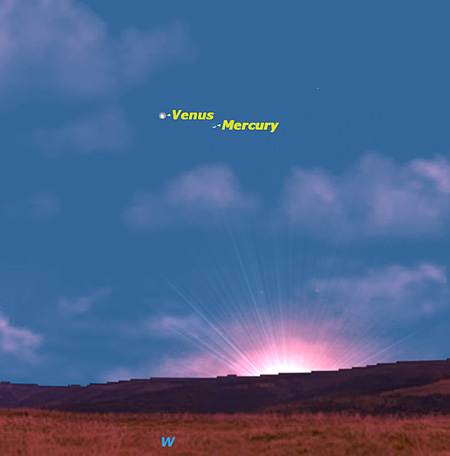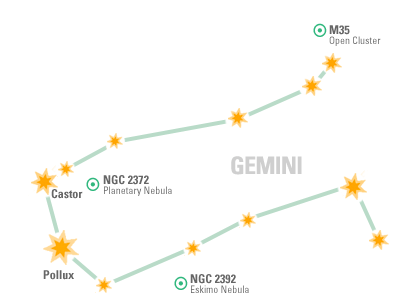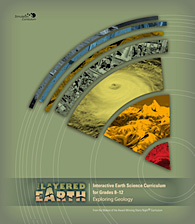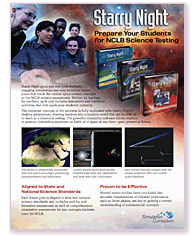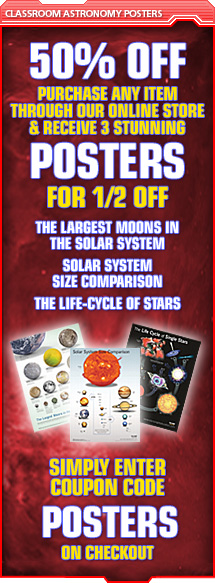 |
||||||||||||||||||||||||||||||||||||||||||||||||||||||||||||||||||||||||||||||||||||||||||||||||||||||||||||||||||||||||||||||||||||||
For education orders please call 1-877-290-8256. Welcome again to our monthly newsletter with features on exciting celestial events, product reviews, tips & tricks, and a monthly sky calendar. We hope you enjoy it!
Workshop: A Celestial Rock Group! Workshop: The Sky Through the Ages Starry Night in the Dome An Earth Shaking Launch! Workshop: The Layered Earth
All this month and into next, Vesta, the brightest asteroid as seen from Earth, will be prominent and easy to find in the constellation of Leo. At approximately 6th magnitude it can easily be found with binoculars or a small telescope (remember that 6th magnitude is the brightness of the faintest stars that the average human eye can see unaided in a dark sky). Here's Vesta's path against the stars for the next month. It will spend all of March tucked under Leo's chin.
Between 1801 and 1807 the first four asteroids were discovered. The name 'asteroid' means 'starlike object', because through telescopes they just looked like points of light. But observations of their movement determined that they were indeed part of our solar system, orbiting the Sun like the planets. Like the other planets, they were named after classical Roman deities, and for several decades in the 19th century, our solar system was said to contain twelve planets: Mercury, Venus, Earth, Mars, Ceres, Pallas, Juno, Vesta, Jupiter, Saturn, and Uranus! (Neptune would not be discovered until 1846, nor Pluto until 1930.) Towards the middle of the 19th century, more of these faint planets were discovered. Eventually there were so many of them that astronomers called them 'vermin of the skies', as if they were annoying little creatures getting in the way of other things that people wanted to observe. Due to the sheer numbers of them, and their nature as little irregular rocks with peculiar orbits, astronomers decided to distinguish the asteroids from the true planets, and they have been known as 'minor planets' ever since. Pluto fans may be comforted or annoyed by this story, as it shows that there is precedence for Pluto's demotion from planet to dwarf planet. In fact, Ceres, once a planet, then a minor planet or asteroid, has been upgraded to a dwarf planet – like Pluto, Ceres is one of a family of thousands of objects, but unlike most of its family members it is massive enough that its gravity pulls it into a spheroid planet-like shape. Brenda Shaw
Go out on any clear night this week and look south (assuming you live in the northern hemisphere). You will see one of the best known star groupings in the sky, the constellation Orion.
Orion is the richest constellation of the winter sky, seen here on a cold February night. Orion is a hunter in the mythologies of many peoples around the world. His body is marked by a rough rectangle of four bright stars. Betelgeuse and Bellatrix mark his shoulders, and Saiph and Rigel mark his knees. In between is a perfect line of three equally bright stars canted at an angle: Alnitak, Alnilam, and Mintaka comprise the Belt of Orion. From his Belt hangs his Sword: three more stars in a vertical line, more closely spaced. All of this can be readily seen in all but the most severely light polluted skies without any optical aid. Look carefully at the two brightest stars in Orion: Betelgeuse in the upper left and Rigel in the lower right. Do they look the same color to you? Betelgeuse is a red giant: a huge ancient star glowing red and varying in brightness over time. In contrast, Rigel is a young blue giant, living life in the stellar “fast lane.” With binoculars or a small telescope, Orion is an incredibly rich area of the sky to explore. It includes a variety of double and multiple stars, and the finest nebula in the entire sky. Rigel is a beautiful example of an unequal double star. In a small telescope, its bright primary star is accompanied by a tiny speck of a secondary star, looking much like a star with a planet. Two of the three Belt stars are multiples. Mintaka at the right end of the belt is a wide double, and Alnitak at the left end is a triple star: a close bright pair accompanied by a distant third star. The greatest treats, however, reside in the Sword of Orion. All three of the “stars” which make up the Sword are in fact multiple stars or star clusters—the distinction is a hard one to make in areas as rich in stars as this. All are involved in complex nebulosity. But it is the middle “star,” Theta, which takes the prize. First of all, it is a double star, Theta 1 and Theta 2. Theta 2 is a wide double star with 5th and 6th magnitude components. Theta 1 is a quadruple star, sometimes known as The Trapezium. Four stars ranging from 5th to 8th magnitude are easily visible in a small telescope. Two more tiny stars can also be seen with a large telescope on a steady night. But that's not all: Theta is in the heart of the Orion Nebula, the brightest nebula in the sky. Visible in any telescope, this nebula rewards detailed study. The bright central region is kidney shaped. Under dark skies two faint wings stretch out covering an area several times larger than the moon. A dark bay, known as the Fish Mouth, divides the main Orion Nebula, Messier 42, from its smaller companion, de Mairan's Nebula (Messier 43). There are dozens more deep sky objects awaiting the celestial explorer in Orion, including one of the most challenging objects in the sky, the Horsehead Nebula. This famous dark nebula, just south of Alnitak, is relatively easy to photograph but frustratingly difficult to see with a telescope, requiring perfect skies, a large telescope, and a special Hydrogen Beta filter. Geoff Gaherty
The ecliptic is the path the Sun, Moon, and planets take across the sky as seen from Earth. It defines the plane of the Earth's orbit around the sun. The name “ecliptic” comes from the fact that eclipses take place along this line. This imaginary line can best be visualized in the days just before full moon, especially when there are bright planets in the sky. This week is a fine example.
Go out under a clear sky just after sunset. In the west, just above the setting sun, you will see the brilliant planet Venus. The moon will be riding low in the east, just above the horizon. Mars, higher in the eastern sky, defines a third point on the ecliptic. A couple of hours later, Saturn will rise in the east, defining another point on the ecliptic. Notice in the image that the moon and planets do not sit exactly on the line of the ecliptic. Although the orbits of the moon and planets are almost in the same plane as the Earth's orbit, they are all a little bit off. At the moment, Mars is slightly north of the ecliptic, and the moon and Mars are slightly below the ecliptic. This discrepancy explains why we don't get eclipses every month. Because the plane of the moon's orbit is slightly different from the plane of the Earth's orbit, the moon usually passes above or below the sun or the Earth's shadow, except close to where the two orbits cross, and an eclipse is avoided. This year, the orbits of the Earth and Moon intersect on June 25 and December 29, so eclipses can only occur within a month or so of these dates. Geoff Gaherty
One of my duties at Starry Night is to produce a large number of graphics to illustrate articles in newsletters and for use online or in PowerPoint presentations. Keep It Simple, Stupid! Something I learned a long time ago as a photographer was to always go for the close up. Focus on the minimum number of objects and crop tightly. Such images have maximum impact on the viewer and are remembered the longest. Or, to put it another way, don't be an ammunition wagon, be a rifle. Applying this to Starry Night, rather than show the whole sky, show the object or objects of interest, with just enough context to get your message across. For example, here is an illustration of Venus and Mercury as twin “evening stars” on April 8:
The image is timed so that the Sun has just set behind the hill, but its halo is still showing to give the viewer a sense of where the planets will be with respect to the Sun. I've enlarged both planets using the Magnification sliders in the Find pane to make them a little more obvious in the image. I've enlarged the font size of the planet and horizon markers to 24 points to make them more readable, and changed the selection color from red to yellow, as the default red text often gets lost as a label color. Finally I've cropped the view to an area 30 degrees square, which seems to match the naked eye view. Preferred Preferences Here are some items in the Preferences dialog for Brightness/Contrast that you may want to change before making illustrations in Starry Night.
You probably also will want to change the Selection color under General to something other than red to make the labels on selected items more legible. Font Size and Style There is no way to change all font sizes globally; they must be changed in each class of object's Options dialog. I find I need to increase the font size to a minimum of 24 points for legibility. I also find that Bold and Bold Italic styles work the best. Some of the places to set font sizes are a little obscure, and require a bit of detective work to discover. For example, the labels for compass directions are in the Options pane under Local View:Local Horizon. Don't set these any larger than 24 points or the labels will be cropped. Constellations The constellation lines will be lost unless you make them thicker (under View:Constellations:Constellation Options). The Labels and Boundaries need to be changed to a lighter shade, and the Illustrations made brighter. While you're at it, increase the brightness of the Milky Way and the All-Sky Image to maximum. Experiment with different Milky Way images; I find the Visible – High Resolution works best for me. Exporting Images Starry Night offers a great variety of export formats. If maximum resolution is desired, use the BMP format. For internet use, JPEG format is standard. For my articles for Space.com, I need to produce JPEGs with a maximum width of 650 pixels. There's no easy way to do this within Starry Night so I use the utility GraphicConverter, which came bundled with my Macintosh; similar programs exist on the Windows side. This lets me scale the graphics down to the desired size. The Bottom Line When you have finished your illustration and place it in your article, handout or online, be sure to include a credit line to Starry Night software. Although you may have massaged them in many ways, the basic design elements of the graphics remain the intellectual property of Starry Night and must be credited properly. Brenda Shaw
Our Solar Neighborhood Explore the the stars closest to our Sun in 3-dimensional space. Motion here is generally an indication of distance: slower moving stars tend to be closer to the Sun. Point your cursor at a star to identify it. Can you tell which star is closest to the Sun? Pedro Braganca
Gemini is well placed for observations in December, floating high overhead in the south-east by late evening. Castor is an easy, pretty double which resolves nicely in small scopes. A true double, the stars revolve around each other every 510 years. Close by is NGC 2372, a faint planetary nebula that looks like a mini-dumbbell. The Eskimo Nebula (NGC 2392), photographed so magnificently by the Hubble Space Telescope, is also known the Clown Face Nebula. Only large scopes bring out the details you would associate with a face, but it's a fun target nonetheless. M35 (NGC 2168) is a lovely open cluster by Gemini's left foot, with a smaller, dimmer but rich companion cluster NGC 2158; physically unrelated, they just happen to lie along the same line of sight. Sean O'Dwyer
|
MAR 2010
|
|||||||||||||||||||||||||||||||||||||||||||||||||||||||||||||||||||||||||||||||||||||||||||||||||||||||||||||||||||||||||||||||||||||
 |
||||||||||||||||||||||||||||||||||||||||||||||||||||||||||||||||||||||||||||||||||||||||||||||||||||||||||||||||||||||||||||||||||||||
|
||||||||||||||||||||||||||||||||||||||||||||||||||||||||||||||||||||||||||||||||||||||||||||||||||||||||||||||||||||||||||||||||||||||
